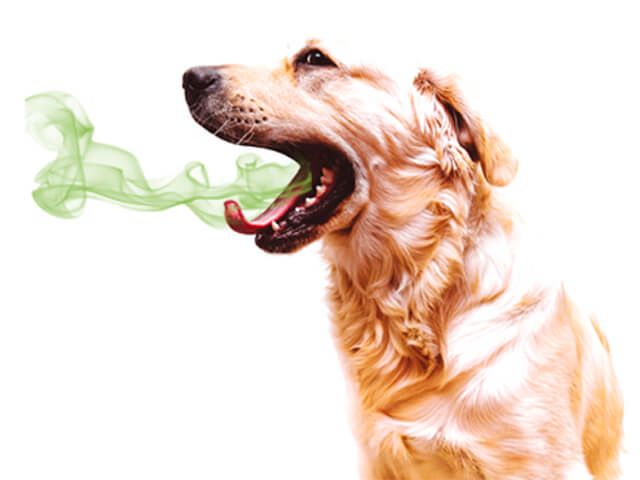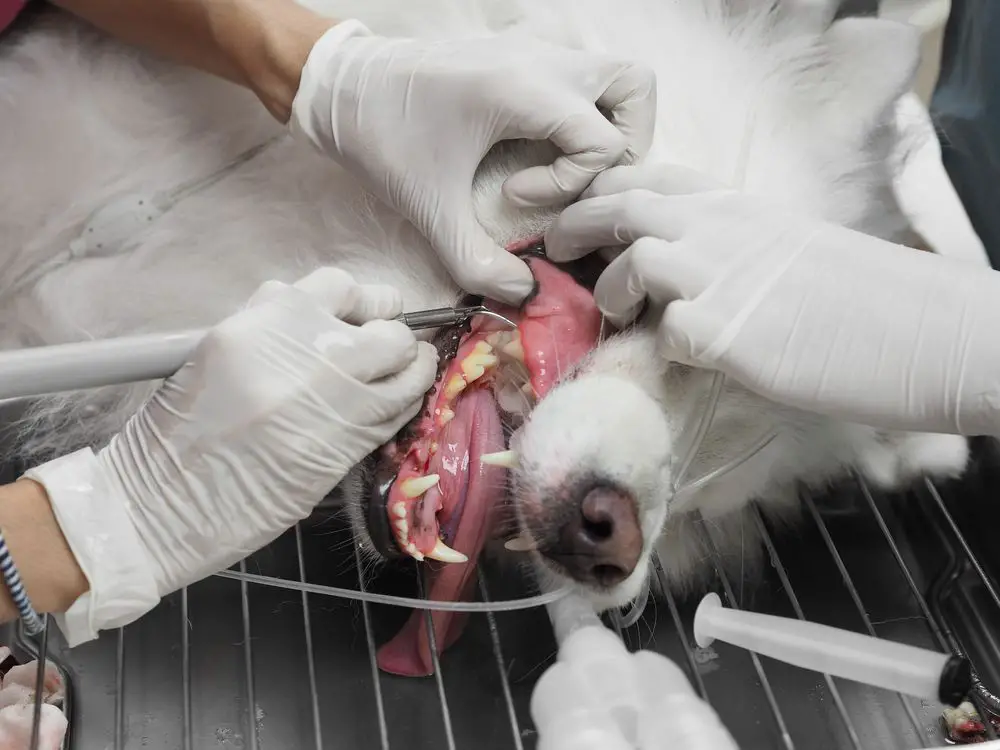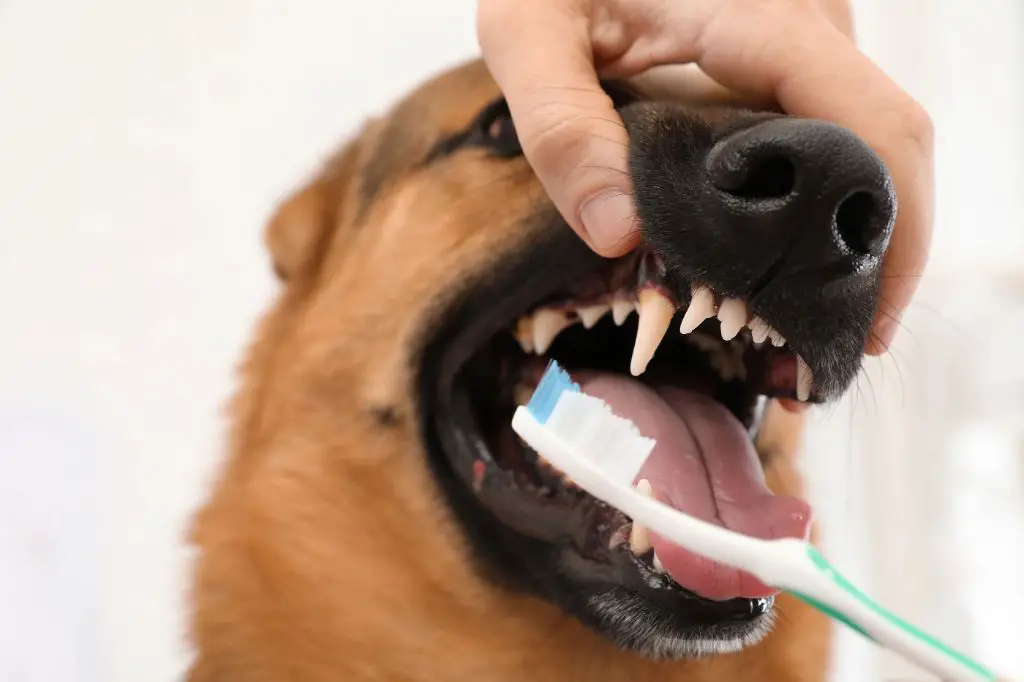Introduction
Oral health is extremely important for dogs, just as it is for humans. Keeping your dog’s teeth clean and free of tartar allows them to eat properly, avoids disease, and leads to a happier and healthier pet. Unfortunately, bad dog breath and yellowed teeth are very common. This is because dogs’ teeth accumulate plaque and tartar just like humans, but they don’t brush and floss! Over time, the tartar builds up, leading to serious dental problems. That’s why it’s essential for dog owners to pay attention to their pet’s dental health. Knowing what unhealthy dog teeth look like is the first step in maintaining good oral hygiene. This article will walk you through the signs of dirty dog teeth and gum disease, as well as prevention and treatment options. With proper care, your dog can enjoy clean teeth, fresh breath, and good health.
Tartar Buildup
One of the most obvious signs that a dog’s teeth need cleaning is tartar buildup. Tartar begins when bacteria in the mouth mix with saliva and food particles to form a sticky film called plaque. Over time, plaque hardens into tartar which builds up above and below the gumline.

The tartar above the gumline is the brown or yellow crusty material that accumulates on the visible parts of the teeth. This discolors the teeth and causes bad breath. The tartar below the gumline is just as damaging but cannot be seen. It spreads under the gums and causes inflammation and infection.
A dog’s teeth should be pearly white and tartar-free. Any visible tartar is a sign that a professional dental cleaning is needed to carefully scale and polish away all the built-up tartar.
Discolored Teeth
One of the most obvious signs that a dog’s teeth need cleaning is discoloration. As plaque and tartar accumulate on the teeth, they can take on a yellow or brown tinge. This staining is a result of plaque forming a sticky film on the teeth. As the plaque thickens over time without proper dental care, it hardens into tartar which causes the tooth discoloration.
The longer plaque stays on the teeth unremoved, the more discolored they will become. Dogs with light colored coats and teeth may show staining faster. But eventually, all dogs will exhibit discolored teeth if tartar is allowed to build up. The extent of the tooth discoloration indicates how much tartar has accumulated.
Some breeds of dogs may have naturally darker teeth that can hide mild discoloration. But in most cases, if a dog’s teeth appear yellow, brown or otherwise stained, it means tartar has built up and professional dental cleaning is required.
Bad Breath
As plaque and tartar build up on a dog’s teeth, rotting food particles get trapped between the teeth and gums. This decaying food debris emits a foul odor that leads to doggy breath. The bacteria in the plaque also produce sulfur compounds that contribute to halitosis. Dogs are less able to clean their teeth than humans, so bits of food accumulate and decompose. A stinky mouth is a key sign that a dog’s oral hygiene needs attention.

The rotting food stuck in a dog’s teeth produces volatile sulfur compounds like hydrogen sulfide, methyl mercaptan, cadaverine, and skatole. These are the main culprits behind bad breath. As gases from the bacteria interact with saliva, the dog’s breath takes on an unpleasant odor. The longer debris stays on the teeth, the worse it smells. A professional dental cleaning removes all that built-up gunk and tartar, eliminating the source of the bad smell.
Gum Disease
Bad oral hygiene can lead to gum disease in dogs. Gum disease, also known as periodontal disease, occurs when plaque and tartar buildup spreads under the gumline. This causes the gums to become red, swollen, and inflamed. The inflammation is a sign of infection and can be quite painful for dogs.
If left untreated, gum disease will continue to worsen, leading to gingivitis and advanced periodontal disease. Gingivitis causes the gums to bleed easily. Advanced gum disease results in severe damage to the soft tissue and jawbone. Tooth loss can occur as the infection spreads deeper below the gumline.
Gum disease also allows bacteria to enter the bloodstream, potentially affecting internal organs like the heart, liver and kidneys. Keeping your dog’s teeth clean is the best way to prevent painful gum infections.
Tooth Loss
If plaque is allowed to build up for too long, it can lead to periodontitis, an advanced form of gum disease. Periodontitis causes inflammation and infection that damages the ligaments and bone that hold the teeth in place. Eventually this causes teeth to become loose and fall out.
Dogs with significant tartar buildup and gum disease often start losing teeth as young adults. The teeth become progressively looser over time until they finally fall out. Sometimes the gums recede as well, making the remaining teeth prone to further disease.
Missing teeth can make it difficult for dogs to eat and chew properly. It also allows other teeth to drift out of place. Overall tooth loss negatively impacts a dog’s health and quality of life. While some tooth loss from gum disease is inevitable in older dogs, proper dental care helps delay and minimize this process.
Pain/Discomfort
As tartar buildup worsens, dogs may begin experiencing pain and discomfort associated with their teeth and gums. The accumulation of tartar can lead to inflammation and receding gums, exposing the sensitive roots of the teeth. This can cause significant pain and discomfort when eating or chewing on toys or other objects.
You may notice your dog becoming reluctant to eat dry kibble or chew on their favorite toys. The pressure and friction against their sore teeth and gums causes pain, so they will avoid behaviors that aggravate their condition. Chewing and biting down becomes uncomfortable. Your once energetic pup may seem disinterested in playtime and turn down treats or meals.
Dogs may also paw at their face more frequently as the inflammation worsens. The pain and irritation in their mouth can cause overall grumpiness and behavioral changes. Seeking treatment for tartar buildup and gum disease can help ease any oral pain and discomfort your dog is experiencing.
Treatment
If your dog’s teeth are in poor condition, the most effective treatment is to have them professionally cleaned by a veterinarian. This involves the vet putting the dog under anesthesia and using specialized tools to clean above and below the gumline to remove plaque and tartar. It’s like a deep cleaning for dogs.

To help prevent future dental problems, it’s important to take care of your dog’s teeth at home too. Brushing their teeth daily with a soft dog toothbrush and dog toothpaste is ideal. Work up slowly from brushing just a few teeth to eventually brushing the whole mouth over time. Give dental treats or chews formulated to reduce plaque as well. There are many options available that are safe for daily use and enjoyable for dogs.
With professional dental cleanings and daily home care, your dog’s teeth and gums can return to good health. Catching dental disease early makes treatment easier as well. Regularly look in your dog’s mouth and if you notice discolored teeth, bad breath, or inflamed gums, have your vet examine them.
Preventing Dirty Dog Teeth
There are several ways pet owners can help prevent plaque and tartar buildup on their dog’s teeth:
Brushing: Daily tooth brushing is the most effective way to remove plaque and tartar. Use a soft-bristled brush and dog-safe toothpaste. Take it slow and make it a positive experience with praise and treats.

Dental diet: Dry kibble and treats are better for teeth than wet food. Look for kibble and treats formulated to fight plaque and tartar. The act of chewing also helps scrape away buildup.
Chews: Offering safe, edible chews provides abrasion to knock off tartar while satisfying a dog’s natural urge to chew. Look for chews made specifically for dental health.
Regular vet checkups: As part of a routine wellness exam, the vet will inspect your dog’s teeth and alert you to any emerging dental problems. Preventive care can stop issues before they escalate.
Conclusion
Regular dental care is crucial for your dog’s health and wellbeing. Poor dental health can lead to gum disease, tooth loss, and other medical issues. By brushing your dog’s teeth daily, providing chew toys and treats, and scheduling professional cleanings, you can help keep your dog’s mouth healthy and free of plaque and tartar buildup.
As a dog owner, make oral hygiene a top priority. Look for signs of dental disease like bad breath and discolored teeth. If you notice any problems, take your dog to the vet right away. With proper prevention and treatment, your dog can enjoy a lifetime of pain-free chewing and healthy teeth.